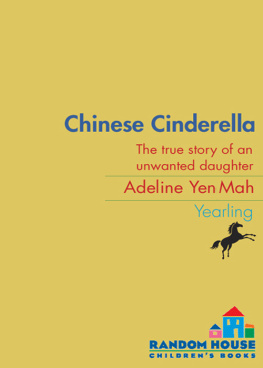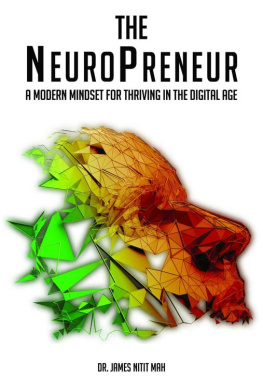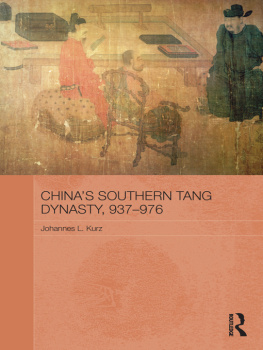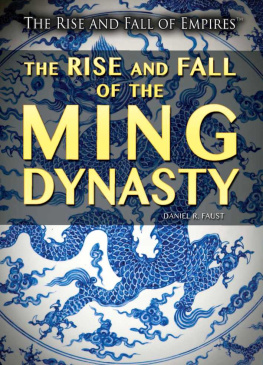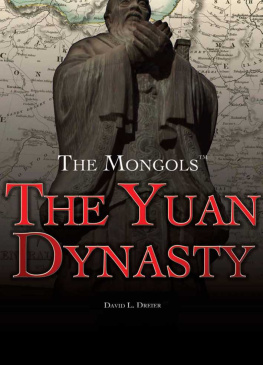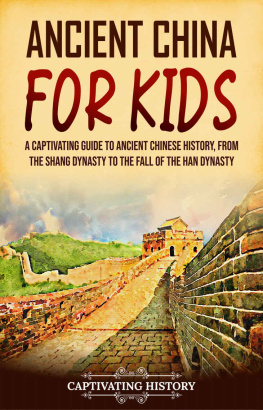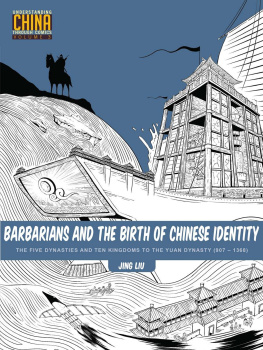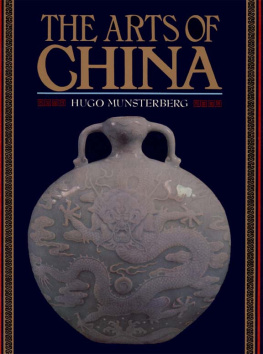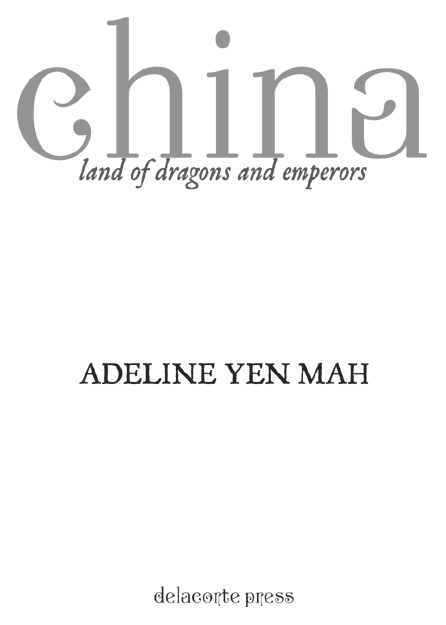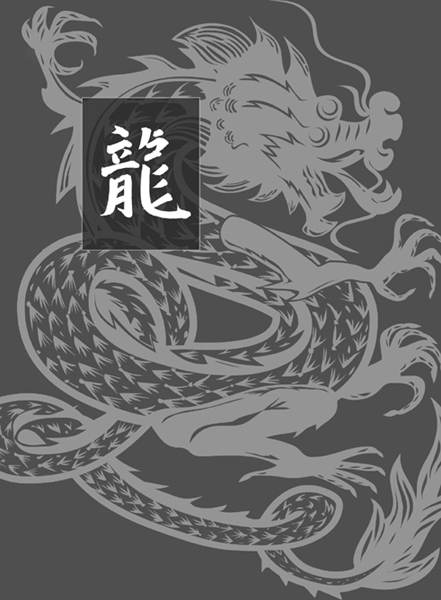ALSO BY ADELINE YEN MAH
FOR YOUNG ADULTS
Chinese Cinderella Chinese Cinderella and the Secret Dragon Society
FOR ADULTS
Falling Leaves
Watching the Tree
A Thousand Pieces of Gold
This book is dedicated to my husband, Bob,
for his support and for making
everything worthwhile.
CONTENTS
symbol of imperial power, as lucky as the number nine,
what colours mean in China
a terracotta army, book bonfires, a travelling corpse
and the start of the Great Wall
early trade along the Silk Road, a cruel Empress,
a heavenly horse, the invention of paper
bandits and warlords fighting it out,
Buddhist caves and carvings
building the Grand Canal, three quarrelling princes,
Chinas only woman Emperor, a love-struck ruler
a soldier enthroned, defeat in the north, the six evil men,
flying money and foot-binding
wild horsemen from the north, the marble palace
of Kublai Khan, a giant catapult
a treasure feet that blocked the sun,
bankruptcy and famine, China walls herself in
pigtails for all loyal citizens, tea but no travel,
the Opium War against the West, the last baby Emperor,
the Chinese language
two different paths, a great leap forward that wasnt,
a chairman with green teeth, superpower rising
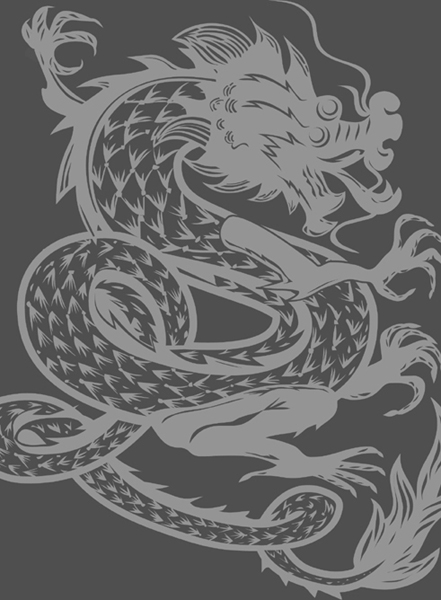
Sincere thanks to my Australian publisher, Erica Wagner,
who commissioned this book; and to my editor, Sarah Brenan,
who lived through the writing process with me.
TO THE READER
I bring you gifts from China: treasures more enchanting than pearls, more precious than jade. Among these pages you will find tales of dragons and emperors, battles and love affairs.
Did you know paper was first made in China? So were the wheelbarrow, crossbow, matches, silk, seismograph, gunpowder, cast iron, stirrups for horses, porcelain, printing and many other wonderful inventions. Chinas history is also full of larger-than-life people: warlords, emperors, concubines, eunuchs, fierce women.
Ill tell you about the six families who ruled China during the last two millennia, where they came from and their family secrets. Well explore underground tombs, sacred caves full of ancient statues, royal palaces, the Silk Road and the Great Wall.
This short book holds my personal list of the most fascinating people from China. Their stories have enthralled me throughout my life. If knowledge gained from history is the truest education, then this book is the best present I can give you.

So how can we find out about Chinese history? As it happens, Chinese history is better documented than the history of any other country. From the time of the Han Dynasty 2200 years ago, each court historian kept a diary of current events. These diaries were compiled into a national history, which was kept secret.
A dynasty is a period of time when members of the same family ruled China. The emperor of each new dynasty would appoint his own historians to write an account of the preceding dynasty. ThisStandard Historywas made available to the public. Today there are 3600 volumes of ChinasStandard History. The last of the series was published in 1986 in Taiwan.
During the last 2200 years, there have been only six major dynasties. Those dynasties, and the Communist rulers of the twentieth century, are the subject of this book. It is well known that Chinese history goes backmuch further, to at least 5000 years ago. The early period is summarised in a chart on pages 2314.
Francis Bacon, the English philosopher known as the Father of the Scientific Revolution, wrote in 1620 that there were three world-changing inventions: printing, gunpowder and the compass. The first transformed literature, the second warfare, and the third navigation. He died without knowing that all three had come from China.
Presently, one-fifth of the worlds population is Chinese, totalling over 1300 million people. There are more Chinese learning English today than all the native English speakers on Earth. One day China could become the number one English-speaking nation as well as the worlds largest manufacturer and consumer. Perhaps it is time to know something about China.
ENTER THE
DRAGON
Lets start before recorded history in
the mythical times when dragons were
supposed to exist. They were said to
have the eyes of a demon and the claws
of an eagle. They were associated
with power over water, with the lucky
number nine and with royalty.
POWER OVER STORMS
The Chinese dragon is a mythical animal which is connected with water and rainfall. In times of drought, government ministers used to offer sacrifices to the dragon and pray for rain. Dragons are also supposed to have power over moving bodies of water such as rip-tides, storms and tornadoes. They fly by magic and occasionally show themselves as twisters or waterspouts.
Chinese legend says a fish saw a beautiful mountain one day and decided to swim to the top. It fought its way upstream, struggled against rapids, overcame waterfalls and finally reached the summit. There it found the stream blocked by a locked gate. Undaunted, the fish jumped over the gate and was immediately transformed into a dragon. Thus an ordinary fish can turn into a dragon if it tries hard enough. (Many waterfalls in China are named Dragons Gate.)
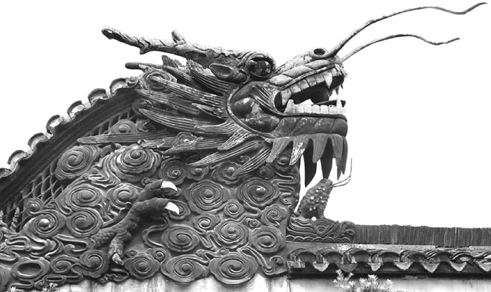
We now think that the dragon idea may have been inspired by the giant Yangzi Alligator, or tu long (earth dragon) which lives in the lower Yangzi River and can grow to a length of nearly 2 metres (6 feet). The alligator is sensitive to changes in air pressure and appears to know when rain is coming.
EMPERORS
SYMBOL
Chinese children were told that when the Yellow Emperor died, he became a dragon and few into Heaven. From then on, the yellow dragon with five claws on each foot became a symbol of imperial power. The Emperors throne was called the Dragon Throne and his robe the Dragon Robe. Only the Emperor was allowed to wear clothes embroidered with a yellow dragon. In ancient times, any person who dared to wear such robes without permission was suspected of treason and might even be executed.


